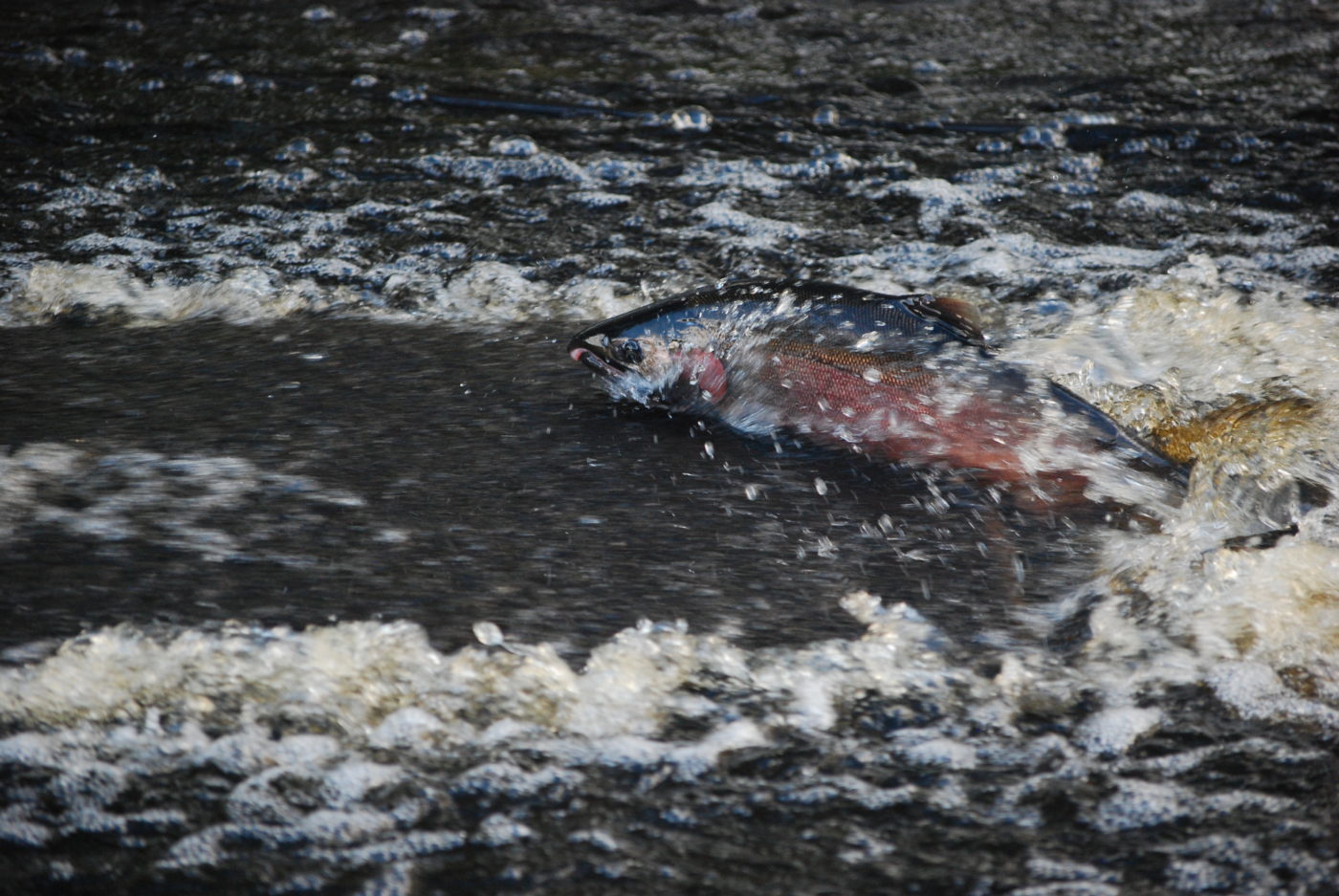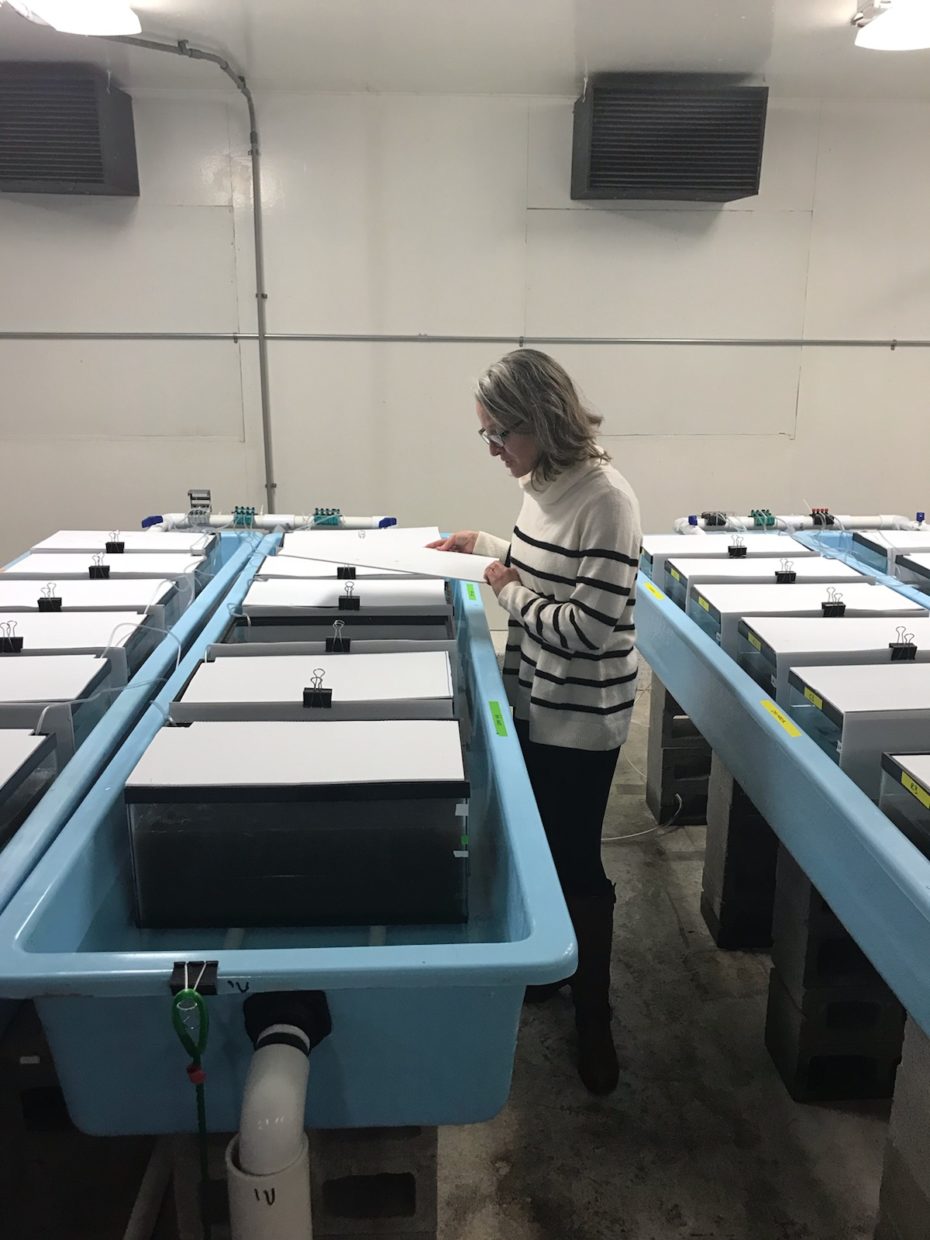Wastewater Project
Purpose
The goal of this study is to estimate the effects on chinook salmon from exposure to wastewater effluent in Puget Sound.
Scope
The study consists of four parts: wastewater sampling, estuarine sampling, a laboratory study, and bioaccumulation modeling. Water samples will be analyzed for several hundred chemicals, most of which are chemicals of emerging concern including those from pharmaceuticals, personal care products, as well as legacy contaminants such as pesticides and polychlorinated biphenyls. The additional chemical analysis includes ‘non-target’ organic chemicals.
1) Wastewater effluents will be sampled for chemical analysis from three municipal wastewater treatment plants managed by King County. Samples will be analyzed from a ‘high flow’ event (i.e. during fall-spring when it is raining) and a ‘low flow’ event (i.e. during summer). Effluent, when it is raining, is called ‘high flow’ because it includes stormwater runoff from various parts of the catchment in addition to the sewer water from homes, businesses, and industry. During ‘low flow’, the stormwater portion is essentially absent. These samples will give us an idea of the concentrations of various chemicals in effluents and their variability at different locations.
2) We will sample estuarine waters near the marine outfall for one of the wastewater plants during the same time as the ‘low flow’ sampling of effluent from the wastewater plant. An additional estuarine sample will be taken on the same day at a site in central Puget Sound that is remote from wastewater treatment plant effluents. These samples will give us an idea of the relative concentrations of chemicals near outfalls of the treatment plants, and how those compare with ‘background’ levels throughout estuarine waters in the King County region of Puget Sound.
3) A laboratory study will expose dilutions of ‘low flow’ wastewater effluent to juvenile Chinook salmon. This study will take place at the Washington State University Aquatic Toxicology Lab in Puyallup, WA. At the end of the study, we will assess chemical accumulation by the juvenile Chinook and conduct various tests to assess impacts on fish health. These tests will use whole bodies as well as blood, liver, and brain tissue. These tests will give us an idea of how exposure to effluent affects the short-term and potentially long-term health of juvenile Chinook salmon.
4) Finally, bioaccumulation models will be used to integrate information on the chemical concentrations juveniles are likely to be exposed to from wastewater effluent discharge into Puget Sound, and the potential health effects resulting from those exposures.
Timeframe/timeline
Jan 2020 – Oct 2022
Parameters measured
Chemistry of wastewater effluents
Chemistry of estuarine waters
Chemistry and health impacts on juvenile chinook
Research Partners
NOAA Northwest Fisheries Science Center (Dr. James Meador)
University of Washington / Center for Urban Waters (Dr. Andy James)
SGS-AXYS
Funders
King County Council





